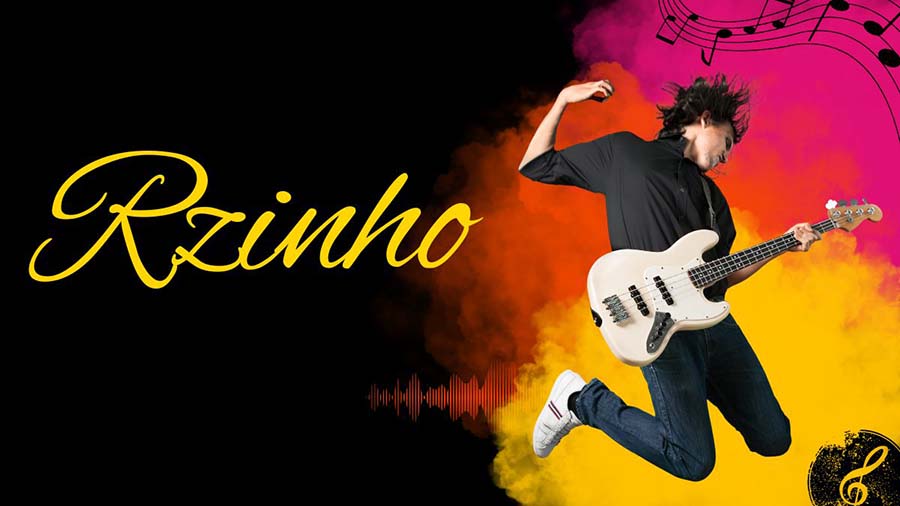Brazil is popular for its vibrant culture and lively beat, which have created many dances that have become famous worldwide. Some of these include samba, an energetic partner dance with African origins, forró, a contagious music genre from the northeast of Brazil. These moves represent physical expression and something deeper: they embody what it means to be Brazilian. One name, in particular, has been making waves recently: “Rzinho.” This article will explore where Rzinho came from, how it’s changed, and why people think of it as Brazil’s dancing spirit.
The Origins of Rzinho: Tradition Blended With Innovation
Rzinho is more than just a dance; it’s an entire movement that encapsulates the essence of Brazilian culture. Its foundations lie in traditional Brazilian rhythms where native, African, and European influences mixed, creating unique musical and dancing traditions throughout the country. ‘Rzinho’ is a colloquialism often used to describe something small yet powerful, reflecting its ability to convey complex emotions or stories through simple movements.
Having emerged from streets and favelas (shantytowns) across Brazil, inclusivity was one key reason behind Rzinho’s rapid rise to fame. Unlike formal dance styles, which require structured training regimes, improvisation skills, and personal expressions are essential components when performing Rzinho. It heavily draws upon rich capoeira/samba traditions while infusing them with modernity, thus making it both nostalgic and current.
The Evolution Of Rzinho: Going Global From Local Roots
What started as another localized form of movement soon became recognized worldwide due to its geographical borders. Its journey from these humble beginnings can best be described as meteoric. RZINHO went international! Unfortunately, no one knows who created it, but the world would never be the same again after it left Brazilian soil. In the early 2000s, when funk, carioca, hip hop, etc., were gaining global recognition, RZINHO was at the forefront of this cultural export. It began incorporating dancers’ choreography routines, showcasing versatility and infectiousness.
Social Media facilitated the phenomenon’s spread outside Brazil because YouTube / Instagram, among other platforms, existed then. This allowed dance videos to reach wider audiences, thus creating virtual communities of enthusiasts around the globe. Dance challenges & tutorials made it possible for everyone, regardless of age or background, to learn more about Rzinho, further cementing its status as a worldwide sensation.
Worldwide mural Significance Of Rzinho: Not Just Another Dance
Rzinho is different from any other form of movement witnessed before—there’s much more to it than meets the eye. It reflects aspects of life within various communities throughout Brazil and acts as a means to communicate with each other. In many ways, Rzinho mirrors resilience alongside creativity often displayed by Brazilians themselves through tales relating struggle to the joy experienced on a daily basis.
Favelas are where dreams sometimes find themselves locked away due to limited resources available; however, individuals still need help finding self-expression in such places as Rio De Janeiro. RZINHO provides one such avenue. Many have used dance programs involving young people using these dances as part of changing behaviors / building pride amongst communities. This inclusiveness has gone even further, breaking down social barriers created by class, gender, or race within society at large.
Furthermore, it also helps preserve culture because instead of letting old traditions die out completely, they’re merged together so that new ones can arise while still having recognizable elements from each period involved, making sure people always relate to them regardless of age.
Rzinho in the Modern Era: Difficulties and Possibilities
As Rzinho continues to grow, it also faces some challenges and opportunities. One of them is preserving its originality against commercialization. Like any other cultural phenomenon that becomes popular among many people, there is always a risk that the dance will lose its content and purpose through misrepresentation.
It is important that we recognize our roots without forgetting where we have come from, especially when dealing with such dances as this one. However, let us not be too conservative since change is inevitable, even in this area.
Another opportunity available now is utilizing Rzinho as a tool for international dialogue through culture sharing. There is a worldwide appreciation of different cultures, which could be fostered if this kind of dance could embrace collaborations across borders.
The invention of new media has also presented an avenue through which Rzinho can reach out to more people. Virtual classes for dancing or online performances may bring it closer to individuals who would never get to physically see or experience the same firsthand. This flexibility saves such types during periods when meeting in groups may not be allowed due to certain circumstances, thus ensuring their survival within communities remains uninterrupted.
The Future of Rzinho: A Dance That Will Never Die
Rzinho looks promising ahead. It has stayed relevant for so long because it keeps changing according to what people want at different times in history, making everyone feel included regardless of their age, social status, background, etcetera. As long as stories need telling and feelings need expressing, rosinho must always remain relevant among other forms found within Brazil alone, let alone the rest of the world.
For those still unfamiliar with Ryzhinio, there has never been a better moment than now to acquaint themselves with such an amazing art form! Whether you have been practicing various dances before or simply love shaking your body along beats, Rzinho welcomes you into its fold. Through these beats and steps, one can connect with Brazil’s heart while encountering the happiness and enthusiasm typical for this dance.
Conclusion
To sum up, Rzinho is more than just dancing; it celebrates life, culture, and togetherness. It also shows how powerful movement can be in breaking down barriers between individuals from different walks of life. When we reveal our rich cultural background through rosin, we feel like we are finally discovering what keeps Brazilian dances alive, thus making them mirror the nation’s energy levels every time they are performed.
Also Read: Back Casting Room: Revolutionizing Film and Television Production










